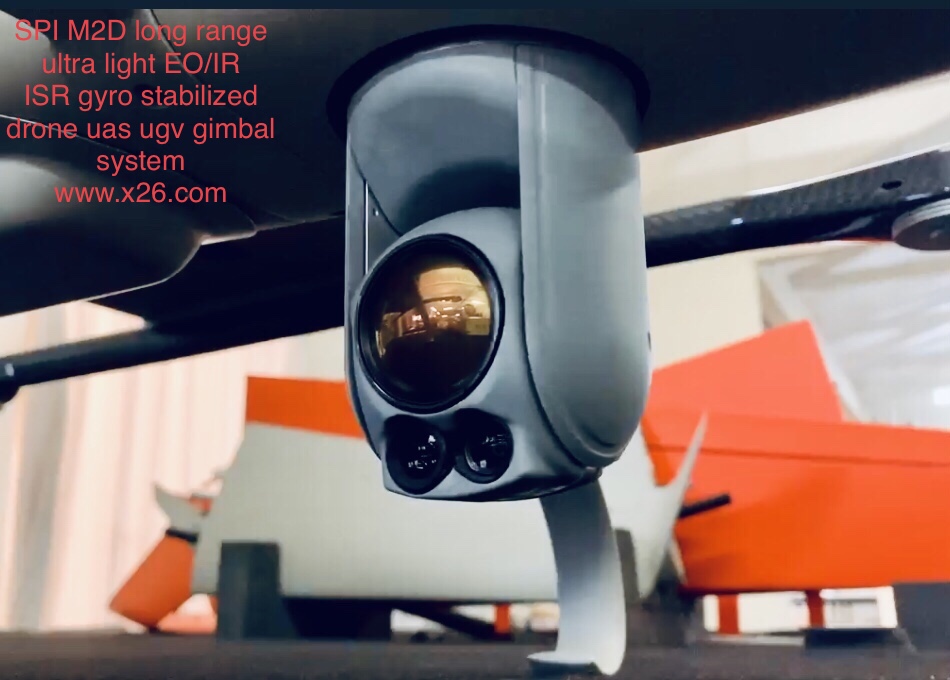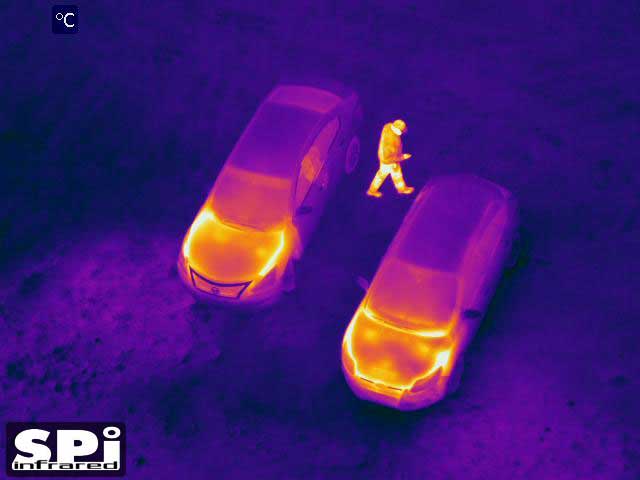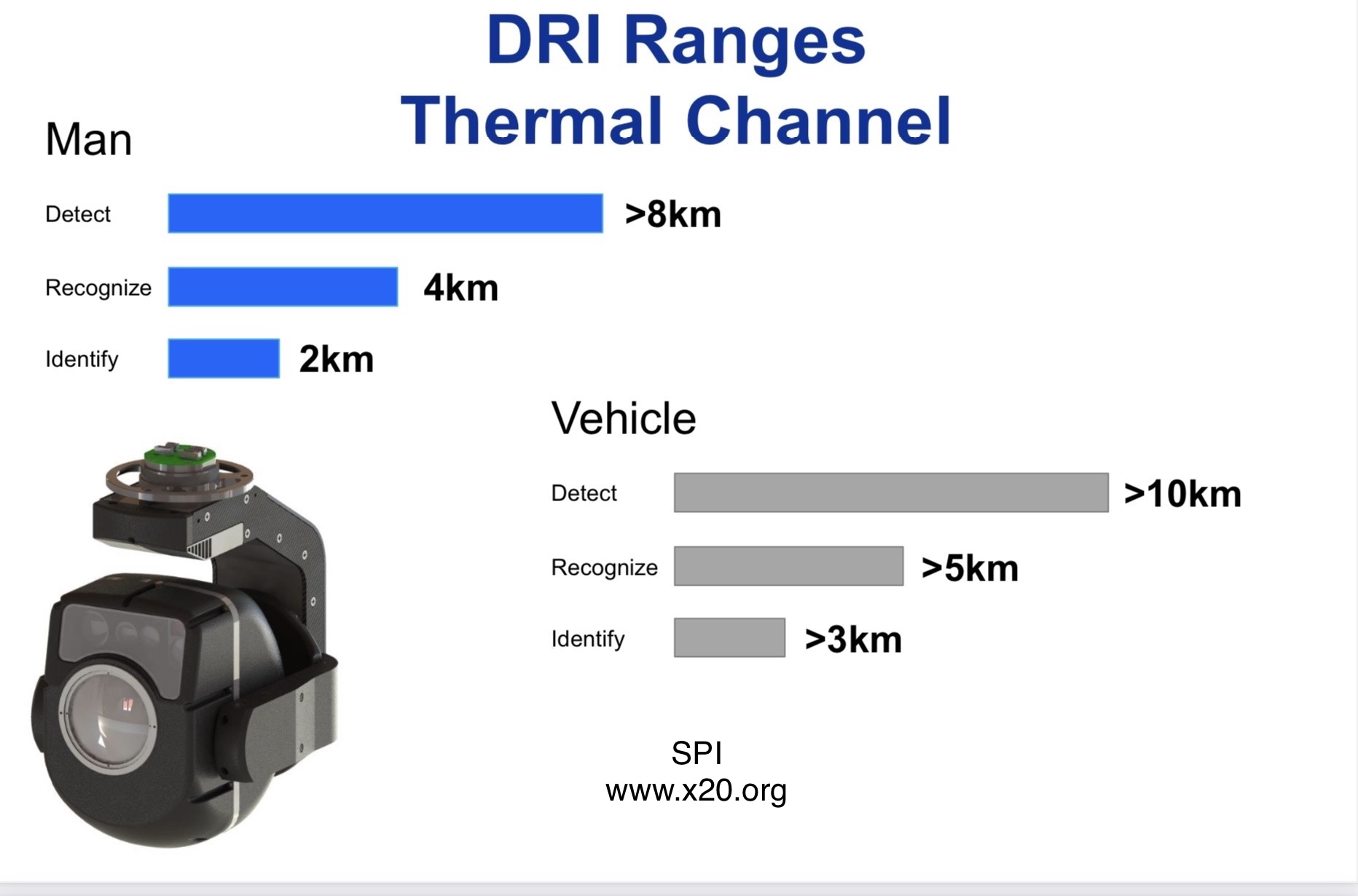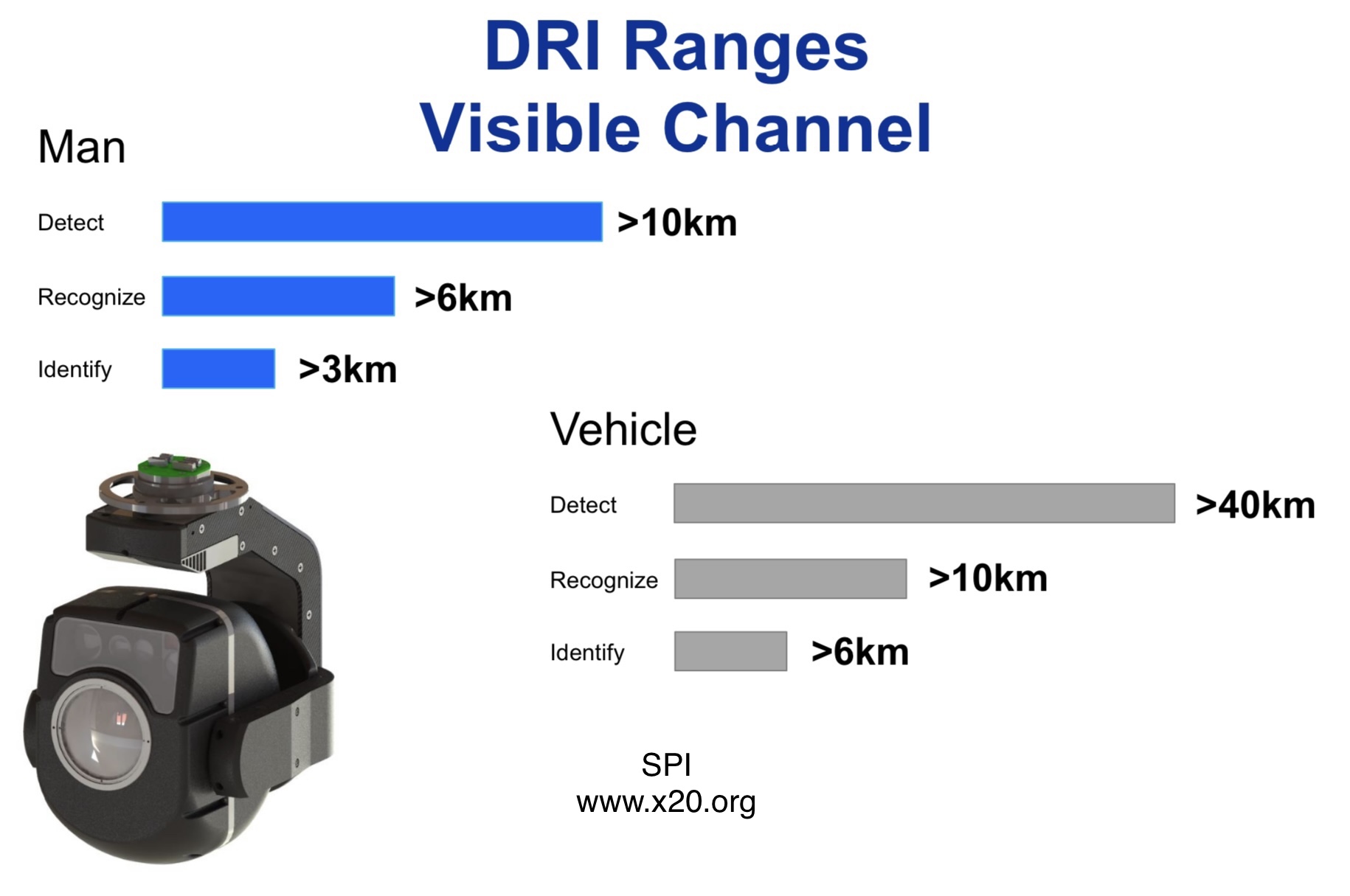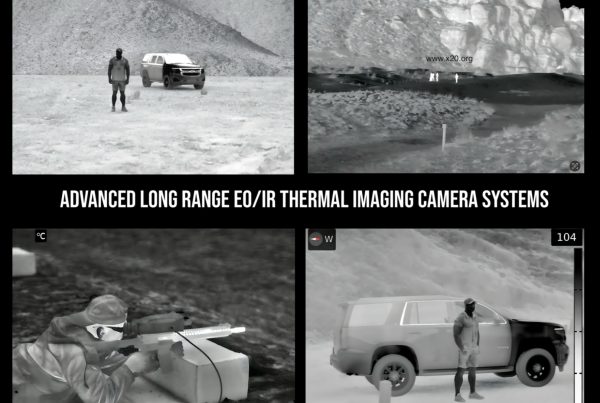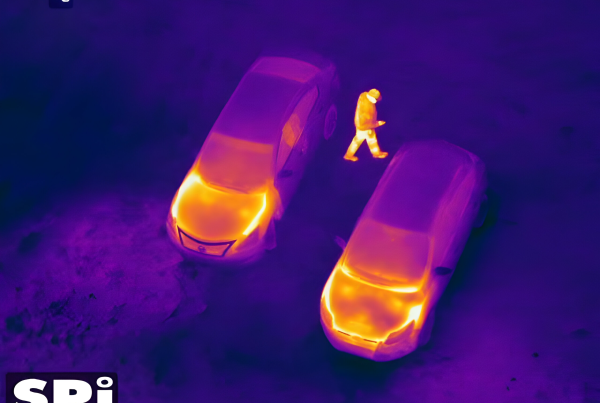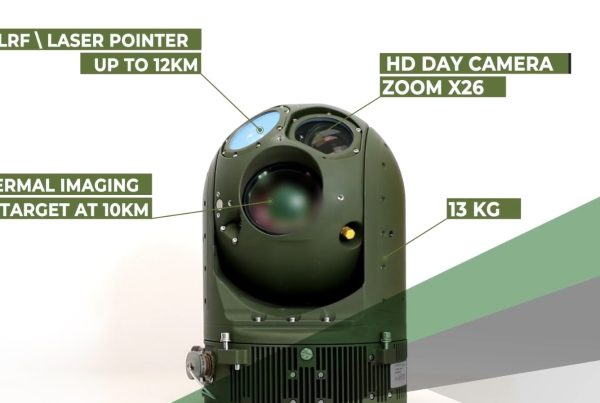The M2-D is the worlds highest performing, smallest, lightest, and most affordable gyro stabilized multi sensor EOIR thermal imaging, flir gimbal turret.
The M2D is a long range micro mini gyro stabilized EO/IR gimbal with advanced electro optical imaging capabilities and rock steady gyro stabilization for UAV, UAS, SUAS, UGV and a host of manned and unmanned remote sensing applications. Multi axis precision gyro stabilization along with crisp clear visible EO zoom CMOS camera and ultra sensitive thermal imaging flir IR LWIR camera are integrated into a small rugged robust housing.
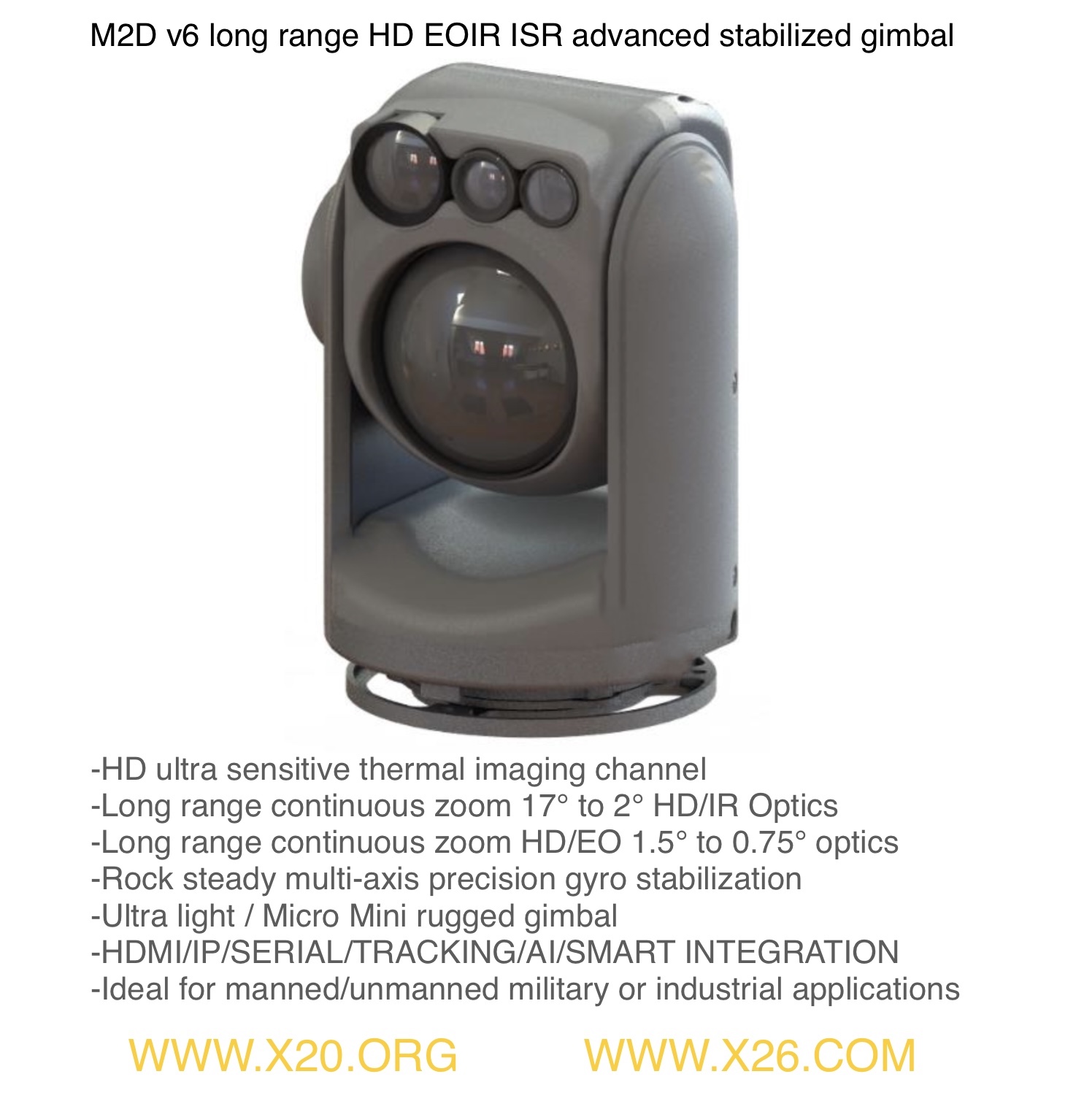
https://www.x26.com/ultra-light-eoir-thermal-imaging-flir-eo-ir-day-night-gimbal-for-manned-and-unmanned-applications/
AVAILABLE IN BOTH HD IR AND HD EO CHANNELS The M2D comes in a few versions, these are the smallest, lightest and highest perform8ng micro mini multi sensor stabilized gimbals available anywhere. Background: Military unmanned vehicles UAV’s of today and tomorrow rely heavily on electro-optical EO Infrared IR sensor payloads to perform their missions.
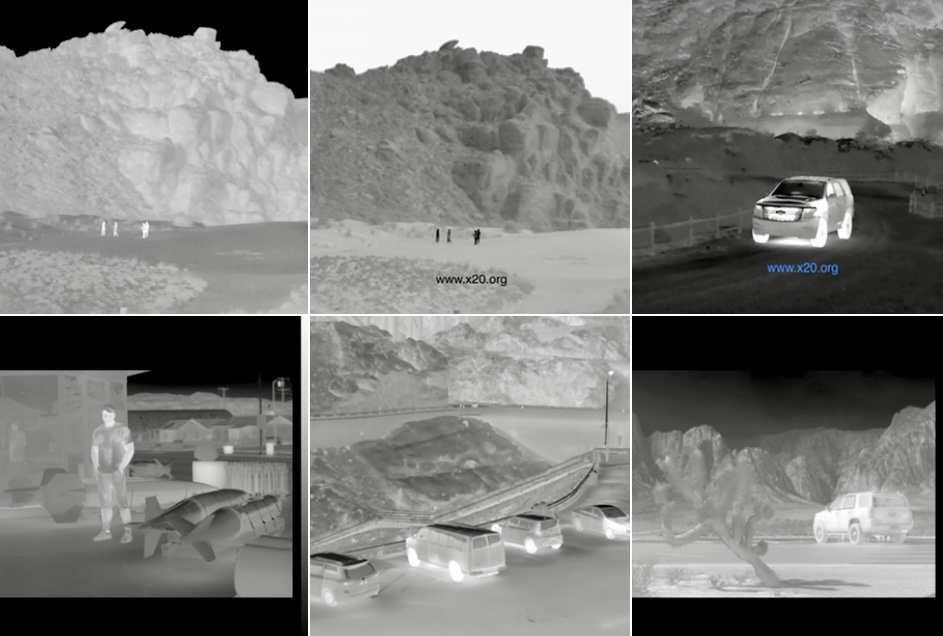
https://www.x26.com/ultra-light-eoir-thermal-imaging-flir-eo-ir-day-night-gimbal-for-manned-and-unmanned-applications/
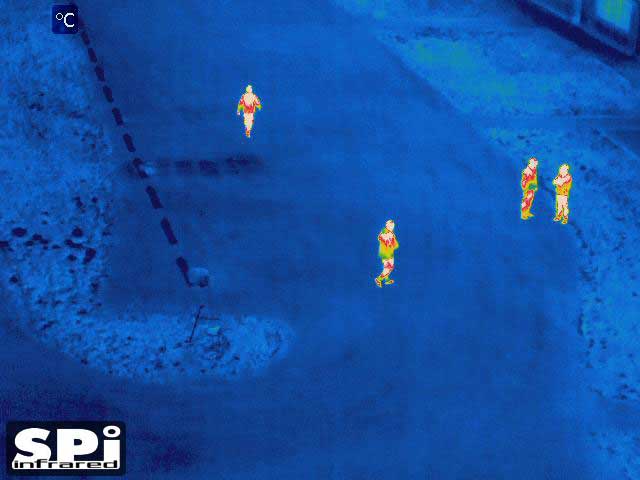 These are the sensors that detect light in many different spectra, and enable unmanned vehicles to see. Electro-optical Infrared EOIR payloads are the sensors that enable unmanned vehicles (UAV/UAS/DRONE) to see and avoid obstacles, detect movement, navigate accurately, find the enemy, and warn of the potential for buried improvised explosive devices (IEDs). Designers of electro-optical Infrared Thermal EOIR – T sensor payloads for unmanned vehicles are under intense pressure to evolve their technologies to keep pace with fast-moving trends in the unmanned vehicles industry. Perhaps in no other market are needs for ever-smaller, lighter, and less expensive payloads as urgent as they are in the unmanned vehicles business. Small size, weight, and power consumption-known by its ubiquitous acronym SWaP-is a paramount concern. Unmanned systems, UAV’s Uas, Suas, Drones, Unmanned Robots, especially the airborne variety, are proliferating at an explosive rate, and demand is extending beyond the military to more cost-sensitive industries such as law enforcement, agriculture, commercial remote sensing, traffic monitoring, and sporting events. Put simply, a growing number of people need unmanned vehicles that are small, inexpensive, and reliable, and they need electro-optical sensor payloads to match. Not only is there demand for ever-smaller, lighter, and less expensive electro-optical Infrared IR (thermal FLIR imaging, Thermal imaging IR Infrared Camera) Gimbal Turret payloads, but demand for capability also is increasing. As electro-optical and electronic component technology becomes smaller, lighter, and more affordable, payload designers sometimes have the option of choosing between smaller size and weight, or more capability. Sometimes they strive to do both, and this presents some interesting possibilities in design tradeoffs. Unmanned aerial vehicles (UAVs) are at the forefront of unmanned vehicle research, development, and procurement. Although no less important than unmanned ground vehicles (UGVs) and unmanned marine vehicles, it is the UAV that is setting the agenda for unmanned electro-optical sensor payloads.
These are the sensors that detect light in many different spectra, and enable unmanned vehicles to see. Electro-optical Infrared EOIR payloads are the sensors that enable unmanned vehicles (UAV/UAS/DRONE) to see and avoid obstacles, detect movement, navigate accurately, find the enemy, and warn of the potential for buried improvised explosive devices (IEDs). Designers of electro-optical Infrared Thermal EOIR – T sensor payloads for unmanned vehicles are under intense pressure to evolve their technologies to keep pace with fast-moving trends in the unmanned vehicles industry. Perhaps in no other market are needs for ever-smaller, lighter, and less expensive payloads as urgent as they are in the unmanned vehicles business. Small size, weight, and power consumption-known by its ubiquitous acronym SWaP-is a paramount concern. Unmanned systems, UAV’s Uas, Suas, Drones, Unmanned Robots, especially the airborne variety, are proliferating at an explosive rate, and demand is extending beyond the military to more cost-sensitive industries such as law enforcement, agriculture, commercial remote sensing, traffic monitoring, and sporting events. Put simply, a growing number of people need unmanned vehicles that are small, inexpensive, and reliable, and they need electro-optical sensor payloads to match. Not only is there demand for ever-smaller, lighter, and less expensive electro-optical Infrared IR (thermal FLIR imaging, Thermal imaging IR Infrared Camera) Gimbal Turret payloads, but demand for capability also is increasing. As electro-optical and electronic component technology becomes smaller, lighter, and more affordable, payload designers sometimes have the option of choosing between smaller size and weight, or more capability. Sometimes they strive to do both, and this presents some interesting possibilities in design tradeoffs. Unmanned aerial vehicles (UAVs) are at the forefront of unmanned vehicle research, development, and procurement. Although no less important than unmanned ground vehicles (UGVs) and unmanned marine vehicles, it is the UAV that is setting the agenda for unmanned electro-optical sensor payloads.
At the top of that UAV/UAS/Drone/Robot agenda is a broad trend toward large and growing numbers of relatively small UAVs that can provide local-area and short-duration surveillance-the kinds of UAVs that can provide squad leaders a view over the next hill. In the not-too-distant past there was a big push on developing sensor technology, and size and weight didn’t matter because DOD had large aircraft like Global Hawk and Predator, as well as manned aircraft, hyperspectral imaging sensors are small and rugged enough to fit on relatively small UAVs. Hyperspectral imaging is a sophisticated discipline that samples a wide variety of bandwidths in the light spectrum to provide a rich data set and detect objects of interest not visible to single-bandwidth imaging sensors. The key element to to reduce size and weight, that is Key! Engineers started with a very small gimbal, and added high-definition visible-light video along with hyper spectral sensor payload. The imperative for small size and light weight has forced mfg’s to a common material set able to withstand harsh environmental conditions such as the stress placed on UAV takeoffs and landings. “The tarmac in the Middle East can be 120 degrees, and the payload must go to thousands of feet a few minutes later where it is much colder,” As electro-optical Infrared (Thermal imaging FLIR camera) Gimbal Turrets (EOIR FLIR) payloads for unmanned vehicles must continue to shrink in size, the engineering challenges become heavier and force engineers to make some custom designs where years ago they would have considered only off-the-shelf solutions.
Available soon: M7D cooled mwir low cost ultralight mini EO/IR drone, UAV, UAS
Multi function laser, LRF tracking rangefinding gyrostabilized gimbal.
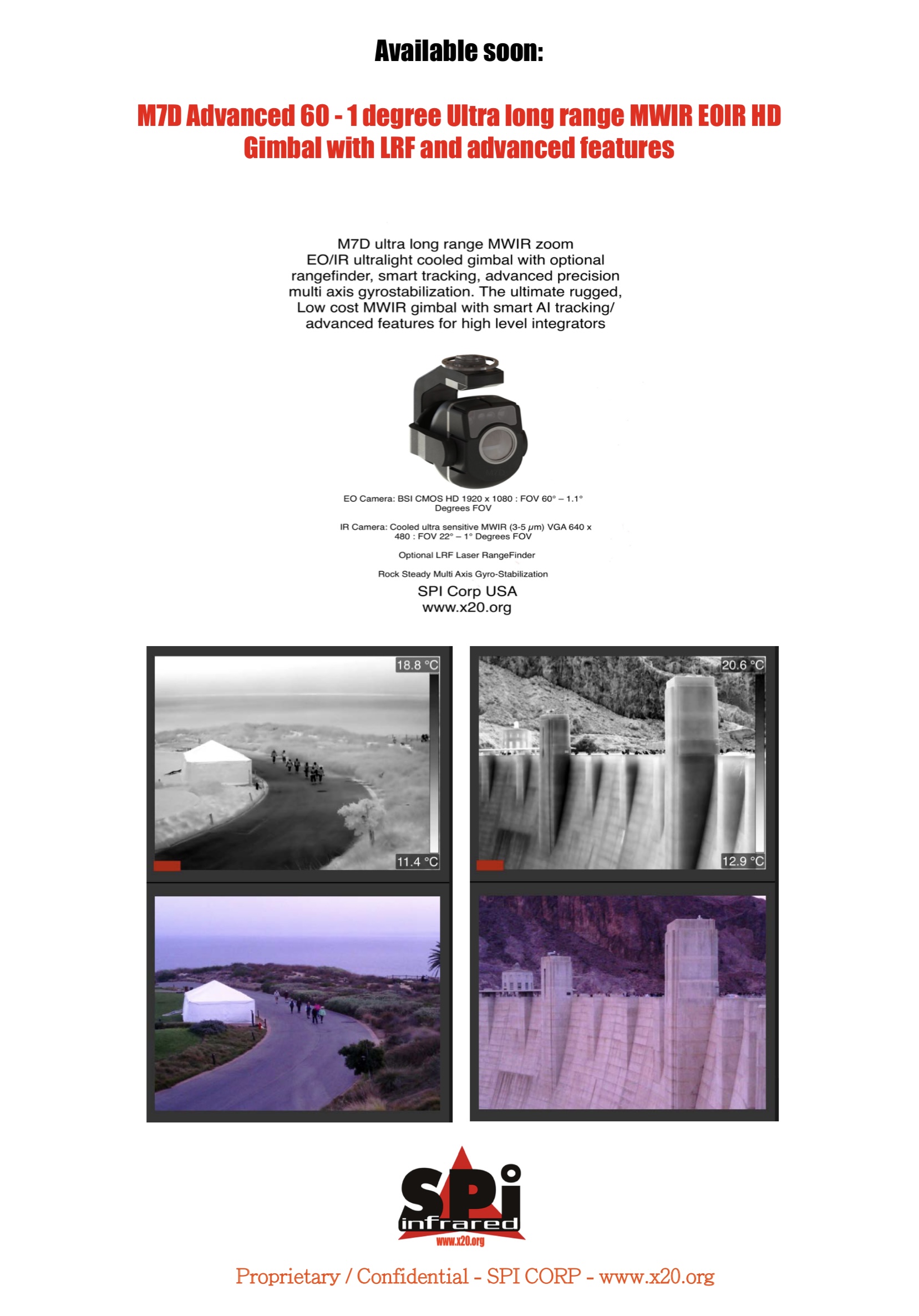
Long range cooled mwir EO IR zoom HD gyrostabilized multi axis drone thermal imaging flir gimbal with laser and LRF rangefinder
The M2D Mini UAV UAS drone thermal flir gimbal Payload Represents one of the smallest stabilized EOIR LWIR Uncooled Gimbal in the market today!
Complete long range zoom EO-IR gimbal camera systems can house long range LWIR MWIR SWIR high-definition video tracking, target tracking and image enhancement and processing capabilities. Multi sensor gimbal payload systems enable users to select a range of cameras and sensors unique to individual mission requirements and can be deployed onboard a broad selection of fixed-wing UAVs, unmanned helicopters, UGVs and USVs. We have laser pointers and LRF laser rangefinder options as well.
EO IR Sensors for UAVs
EO-IR sensors and camera systems are suited to a broad spectrum of unmanned aerial platforms, including VTOL multirotor UAVs, fixed-wing and hybrid UAVs, as well as tethered drones, aerostats and balloons. In addition they can be fitted to fixed site installations, unmanned ground vehicles (UGV) and unmanned surface vehicles USV).
Miniature EO/IR Gimbals
Developed for short, medium and long-range aerial missions, EO/IR gimbal payloads for UAVs are designed to meet a variety of SWAP (Size Weight and Power) requirements. Often miniature EO/IR gimbals are engineered for specific mission types and conditions, for example daytime, night-time and tactical operations. Lightweight and easy to mount, they can be efficiently swapped out depending on drone and/or mission requirements.
Gyro-Stabilised EO/IR Gimbals
Depending on the type and maximum payload capacity of the UAV or unmanned system, gyro-stabilized EO/IR gimbals can have 2, 3 or 4 axis:
-
2-axis gimbals – gyro stabilized pitch and roll
-
3-axis payloads – gyro stabilized yaw, pitch and roll
-
4-axis systems – gyro stabilized yaw, pitch and roll, plus up and down motion

